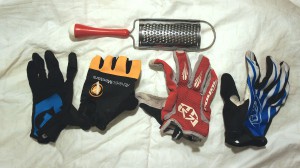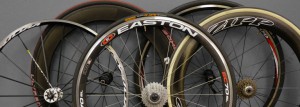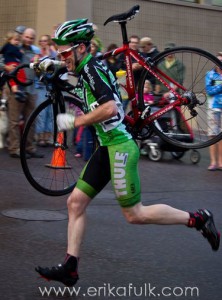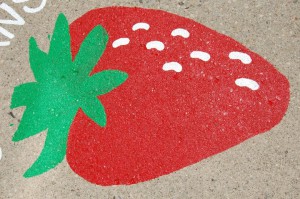 By Collin Snyder, Team OAM Now Cyclist
By Collin Snyder, Team OAM Now Cyclist
We all know the basics: ride a lot, eat right, pay attention, and success comes with hard work. However, there are some things in racing that can only be learned through years of trial and error. After seeing a new Team OAM Now racer lose a race after a small error on the first lap, I put together a cheat sheet to help young racers succeed. If you find any of this useful, share the love and share this on Facebook!
 Gloves: Racing is inherently dangerous and accidents happens. While I rarely use gloves when I’m out on a solo training ride, I always wear them while racing. Back in 2008, I crashed hard in a Cat 4 race going about 30mph. Making a 4 hour drive home with hands that looked like I had exfoliated them with a cheese grater made me think twice about clothing choices. Ever since then, when I race, it’s with full-finger MTB gloves. I’ve seen others take it one step further and wear Craftsman Mechanics gloves or, in Rich Stark of AAVC’s case, bright orange gardening gloves.
Gloves: Racing is inherently dangerous and accidents happens. While I rarely use gloves when I’m out on a solo training ride, I always wear them while racing. Back in 2008, I crashed hard in a Cat 4 race going about 30mph. Making a 4 hour drive home with hands that looked like I had exfoliated them with a cheese grater made me think twice about clothing choices. Ever since then, when I race, it’s with full-finger MTB gloves. I’ve seen others take it one step further and wear Craftsman Mechanics gloves or, in Rich Stark of AAVC’s case, bright orange gardening gloves.
Pin Your Number down: One thing that will instantly identify you as a noob is not pinning your number correctly. In running races, it really doesn’t matter all that much. Use 4 safety pins, put them through the 4 little holes on the number and place it wherever you see fit on your jersey. Do this in road racing, and your guaranteed a number that acts like a parachute and tells others “Stay away from me. I don’t know how to put a number on, so don’t count on me making it through this next corner.” Instead, use the steering wheel on your car to stretch the jersey out a bit, and go to town. The more pins the better. You want to let as little air as possible get behind the number. Do not use the holes. If it’s a race that requires 2 numbers, insure you can still use your pockets. Place the edge of the number along the top edge of the pocket. Again, pin away.
 Wheel Pit/Truck: In most crits and road races, there is either a wheel pit (crits) or a follow vehicle (RR), where you can throw a spare set of wheels in should the unfortunate situation arise when you may need them. If you’re just starting out and don’t have the random collection gathered over time collecting dust (anyone want to buy a wheelset off me?), find yourself a cheap, non-fancy wheelset and the accoutrements that go with it (tires, skewers, cassette). No need to spend thousands of dollars on a fancy pair of Zipps. If you luck out, you may never touch them the whole season. For the backup set, make sure that the cassette has the same number of teeth your race setup has, and your tires are inflated to the proper pressure for the conditions.
Wheel Pit/Truck: In most crits and road races, there is either a wheel pit (crits) or a follow vehicle (RR), where you can throw a spare set of wheels in should the unfortunate situation arise when you may need them. If you’re just starting out and don’t have the random collection gathered over time collecting dust (anyone want to buy a wheelset off me?), find yourself a cheap, non-fancy wheelset and the accoutrements that go with it (tires, skewers, cassette). No need to spend thousands of dollars on a fancy pair of Zipps. If you luck out, you may never touch them the whole season. For the backup set, make sure that the cassette has the same number of teeth your race setup has, and your tires are inflated to the proper pressure for the conditions.
Know thy Pressure: Sidewall says Max pressure: 135PSI. Pump them up to that and your good to go right? WRONG. Terry Ritter wrote an article about the science of pressure back in November. For a quick synopsis, rock hard tires will not deform, thus they will not grip in corners. I’m 160ish lbs and for racing, I find right around 85-105 psi is ideal. When it’s raining or it may rain halfway through the race, I will drop my pressure even more to around 75ish psi for extra grip. This is one reason why most higher end racers use tubular tires because they allow you to run lower pressure without the risk of pinch flatting. Make sure your tires in the wheel pit are the same pressure. I remember a buddy who flatted in a wet crit, took his free lap and forgot he pumped his spares to 120psi; he crashed on the next corner. Get the pressure right on both sets of tires.
Free Laps are a beautiful thing. In most crits, free laps are available to racers when something out of their control happens during a race. These mishaps include mechanicals such as a flat tire or broken spoke, or a crash. When you have a situation like this, get to the pits right away (don’t ride backwards on the course) and find an official to tell them you need a free lap and why. They will check you or your bike over and either say yes or no to the free lap. If you show up with a poorly maintained bike and your mechanical issue occurs because you forgot to tighten your handlebars, or did a poor glue job on your tubulars, the ref will deny your free lap and you’ll be left to chase or DNF. If he says okay, the ref will place you where you were in the race. If you happen to be in the breakaway, they will place you there. If you were in that groupetto struggling in the back, don’t expect to be placed in the main field. Have your bike in a smaller gear that will allow you to accelerate quickly. When the field comes around, get up to speed and gracefully flow into the field.
 Know When free laps end: At the beginning of the race, the ref will give their normal speech. One key detail to listen to is when the free laps end. All good things must end, and free laps are no different. To avoid someone intentionally crashing with 3 laps to go, sitting out lap 2, and jumping into the field all fresh with 1 to go, the ref will put a limit on free laps. They might say free laps end with 5 laps to go, 10 minutes, etc.. If you do end up crashing towards the end of the race, know what lap you’re on to make sure the free laps are not over. If you do get a flat with 2 to go, you can still enter the pits and change out your wheel, you’ll just have to chase after that replacement like I did, a few years back, in the picture to the left.
Know When free laps end: At the beginning of the race, the ref will give their normal speech. One key detail to listen to is when the free laps end. All good things must end, and free laps are no different. To avoid someone intentionally crashing with 3 laps to go, sitting out lap 2, and jumping into the field all fresh with 1 to go, the ref will put a limit on free laps. They might say free laps end with 5 laps to go, 10 minutes, etc.. If you do end up crashing towards the end of the race, know what lap you’re on to make sure the free laps are not over. If you do get a flat with 2 to go, you can still enter the pits and change out your wheel, you’ll just have to chase after that replacement like I did, a few years back, in the picture to the left.
Tagaderm: Crashes happen. Back in the day, it was buy a Costco size tube of Neosporin and a ton of gauze and practice your mummy costume. These days, first aid products have gotten much better and allow you to race virtually pain free the next day. Tagaderm is a product that looks like high tech cellophane wrap, originally developed for burn victims to act as a second skin. These days, it’s a life saver for treating road rash. To use it, clean the area up, disinfect using some no sting antiseptic spray, then dry the wound and area around it. Apply the Tagaderm, and you’re good to go. I tend to replace it every 24 hours. One pro tip is to always have it on hand. If you buy it from a medical supply shop or Amazon, you can buy a generic brand for under $1 per sheet. I tend to go for the 4×4.75” sheets as they are perfect for your typical road rash on the hip.
Skin suit with no pockets: No problem. For most races over 90 minutes, I like to eat a gel at about minute 50. The question is where do you put your gels? The mountain biker way to do it is tape it to your top tube, but that’s messy and looks ugly. I’ve always put them in the leg band. This way they are easily accessible and are pretty secure. This only works if you have a nicely fitting (read tight) skin suit. On a previous team, I had a skin suit that was a little on the big side, so when I stood up, on more than one occasion, I dropped my gel.
 Watch out for Strawberries: Here is one more thing to panic about when it comes to racing in the rain: Street Paint. When dry, the images looks harmless and act as normal pavement, but add water or rain and street paintings might as well as be ice. Over the years, I’ve done a race down in Troy, Ohio, home of the strawberry festival. The town embraced the strawberry fest so much that they painted car-sized strawberries all over the main street. The last year I raced it, the rain started midway through the race. After the 4th person had his front wheel slip out from him on a deadly strawberry, a collective battle cry of “WATCH OUT FOR THE STRAWBERRIES!” came from the field. The solution is simple: try to stay off painted areas. Sometimes it’s unavoidable, so if you have to ride over them, do it without leaning on your bike too much, and be ready for some slippage.
Watch out for Strawberries: Here is one more thing to panic about when it comes to racing in the rain: Street Paint. When dry, the images looks harmless and act as normal pavement, but add water or rain and street paintings might as well as be ice. Over the years, I’ve done a race down in Troy, Ohio, home of the strawberry festival. The town embraced the strawberry fest so much that they painted car-sized strawberries all over the main street. The last year I raced it, the rain started midway through the race. After the 4th person had his front wheel slip out from him on a deadly strawberry, a collective battle cry of “WATCH OUT FOR THE STRAWBERRIES!” came from the field. The solution is simple: try to stay off painted areas. Sometimes it’s unavoidable, so if you have to ride over them, do it without leaning on your bike too much, and be ready for some slippage.
FREE CLINIC: Want to learn more secrets of racing? Show sign up for our racer clinic this Friday. We will be hosting FREE racer clinics (pre-registration required) for both men and women on July 10th which will include instructions from Frankie Andreu and Team OAM Now’s Elite Men’s race team. Pre-register here for the men’s clinic or here for the women’s clinic.
The post Trade Secrets: Things They Don’t Teach You About Racing appeared first on Team Athletic Mentors.
 Athletic Mentors
Athletic Mentors